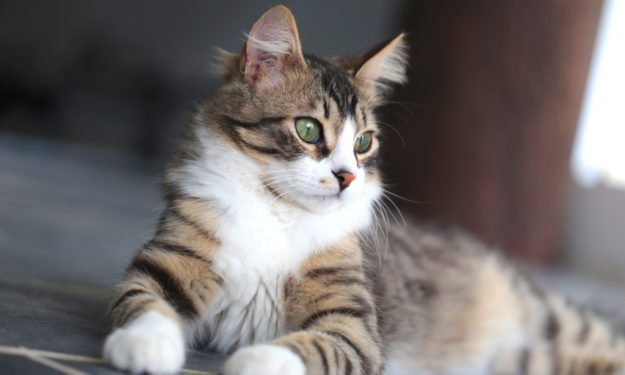Urinary Obstruction in Cats: Causes & Treatment for Blood in Urine

Urethral obstructions are life-threatening emergencies that can occur in cats. They commonly occur in male cats due to the urethra being narrower than it is in females. Urethral obstructions can be caused by plugs (a mix of mucus, crystals, and inflammatory cells), stones, blood clots, masses, or congenital defects. Environment and stress can also play a role in cats becoming obstructed, as stressed cats can have a greater inflammatory response and increased urethral spasms.
Symptoms of an Obstruction
- Prior to the actual obstruction occurring, a cat may be inappropriately urinating, frequently urinating, and/or have bloody urine.
- Once the cat is actually obstructed, they may vocalize, strain to urinate with no production, vomit, and/or become increasingly lethargic.
If you note any of these signs, a veterinarian should evaluate your cat immediately.
Why It’s An Emergency
These obstructions are life-threatening for several different reasons. When the bladder fills, the pressure builds and starts to damage the tissue. In severe cases, the tissue can actually die and the bladder can rupture. This pressure also backs up and affects the kidneys and can subsequently cause kidney failure. Potassium, which is usually excreted in urine, becomes elevated in the blood. This potassium has a direct affect on the heart and slows the heartbeat − and if severe enough, can cause cardiac arrest.
Treatment
Action is taken immediately when these cats come into the veterinary clinic. Blood work is performed to assess kidney function and potassium levels. The urine is evaluated to look for blood, white blood cells, crystals, and bacteria. A radiograph is taken to look for stones. The cats are started on IV fluids for dehydration, diluting potassium, and kidney support. If there is an increased potassium level, typically insulin, dextrose, and calcium are used to drop it quickly. Blocked cats are typically sedated or anesthetized in order to pass a urinary catheter. The urinary catheter is left in for 24-48 hours. This allows for the bladder to be flushed out and for inflammation in the urethra to go down. Cats are also started on anti-spasmodic and pain medications.
A diet change may be necessary if crystals or stones are found. Decreasing stress and environmental changes can be helpful in preventing these cats from obstructing again. Many do well but some become obstructed again. If this happens, surgery that can be performed to open the urethra.
Urethral obstructions can occur in both female and male cats and dogs, but if your male cat is straining to urinate or vocalizing, it’s a cry for help!